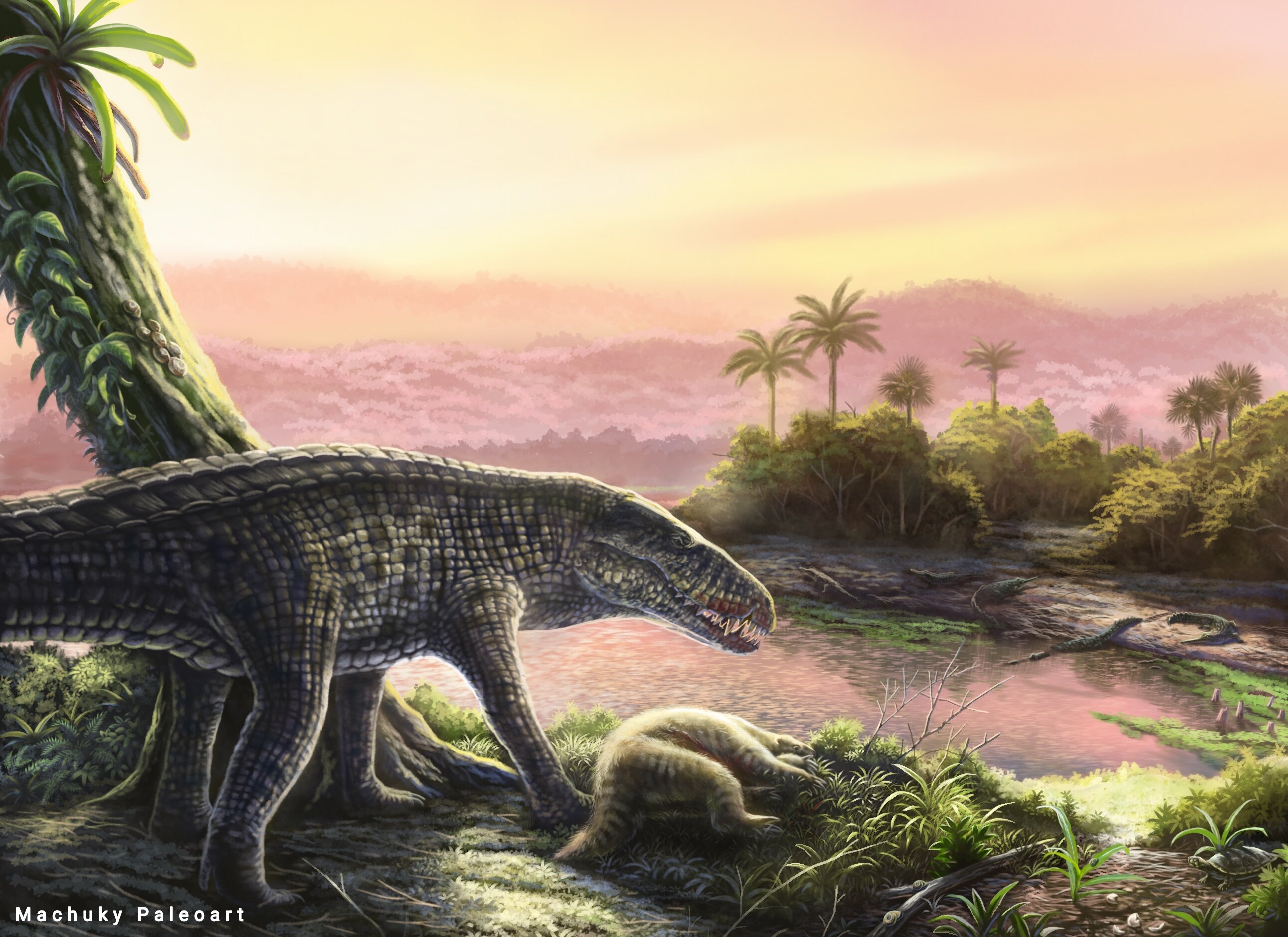Giant crocodilians where you least expect them 🦎
Follow us on Google News (click on ☆)

An artistic representation of a sebecid, a terrestrial crocodilian that dominated South American ecosystems.
Credit: Jorge Machuky
Jonathan Bloch from the Florida Museum of Natural History explains that the first teeth found in the Dominican Republic raised many questions. Their tapered shape and small serrations clearly indicated a top predator, surprising scientists.
The 2023 discovery of a tooth accompanied by vertebrae in the Dominican Republic formally identified these fossils as belonging to a sebecid. This find suggests the Caribbean served as a refuge for these animals long after their disappearance elsewhere.
The study, published in Proceedings of the Royal Society B, shows that sebecids may have colonized the Caribbean through temporary land bridges. This hypothesis, known as GAARlandia, could explain how these predators reached the islands.
Sebecids, the last representatives of Notosuchia, were very different from modern crocodiles. Their terrestrial lifestyle and carnivorous diet made them formidable predators, capable of competing with theropod dinosaurs.
This discovery opens new perspectives on the evolutionary history of the Caribbean. It also highlights the importance of islands as biodiversity conservatories, preserving species long after their disappearance on continents.
Paleontologists are now exploring new methods to discover older fossils in the Caribbean. These efforts could reveal more surprises about the natural history of this biodiversity-rich region.
What is GAARlandia?
GAARlandia is a scientific hypothesis proposing that a land bridge or island chain temporarily connected South America to the Caribbean. This connection would have allowed various terrestrial species, including sebecids, to colonize the islands.
This theory is supported by geological and paleontological evidence, suggesting this corridor existed millions of years ago. It would have played a key role in species dispersal between the two regions.
Recent fossil discoveries of sebecids in the Caribbean strengthen this hypothesis. They indicate these predators likely reached the islands through this route, surviving long after their continental extinction.
GAARlandia thus provides a plausible explanation for the presence of terrestrial species in the Caribbean, enriching our understanding of island ecosystem evolution.
How did sebecids dominate their ecosystems?
Sebecids were formidable predators adapted to a fully terrestrial life. Their long, agile limbs allowed them to pursue prey with remarkable efficiency, much like theropod dinosaurs.
Their dentition, with tapered, serrated teeth, was perfectly adapted for tearing flesh. Some species could reach 20 feet (6 meters) in length, with bony armor for protection.
After dinosaur extinction, sebecids quickly became dominant predators in South America. Their evolutionary success demonstrates their adaptability and hunting efficiency.
Their presence in the Caribbean, long after their disappearance elsewhere, shows their ability to colonize new habitats. This resilience makes sebecids a key study subject for paleontologists.